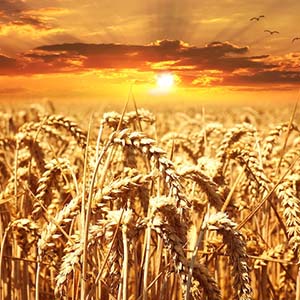Impact of long-term (1764-2017) air temperature on phenology of cereals and vines in two locations of northern Italy

Accepted: 27 November 2022
Appendix: 64
HTML: 49
All claims expressed in this article are solely those of the authors and do not necessarily represent those of their affiliated organizations, or those of the publisher, the editors and the reviewers. Any product that may be evaluated in this article or claim that may be made by its manufacturer is not guaranteed or endorsed by the publisher.
Understanding how long-term temperature variability affects the phenology of the main agricultural crop is critical to develop targeted adaptation strategies to near and far future climate impacts. The objective of this study was to use crop phenology as a proxy to quantify the impact of a long-term temperature variability series (1764-2017) on a summer cereal crop (maize), spring wheat, winter wheat, and four different vines (perennials) in two locations representative of the main agricultural areas in northern Italy. To develop the phenological models for cereals and grapevines, the minimum (TDmin) and maximum (TDmax) daily temperatures for Milano and Bologna, northern Italy, from 1763 to 2017 were used. Results showed that wheat (spring and winter) has experienced a reduction in the growing period of 13 days for each °C of air temperature increase during the growing season. Vernalization requirements of winter wheat indicated that further increase in air temperature will determine a shift towards a supraoptimal range. The subsequent delay in vernalization fulfilment causes the grain filling phase to occur in warmer conditions and will be further shortened with consequences for final yield. Chilling accumulation in vines was fulfilled over the entire period under study with 90% effective chilling.
Highlights
- Long-term weather series show how the mean air temperature and its extremes have changed over the years.
- Simulation of cereals and perennials phenology using long-term weather series showed a shortening of the growing season and a shift of developmental stages.
- The number of days when the air temperature is above the crops’ physiological threshold increased, with implications for development and senescence rates.
How to Cite

This work is licensed under a Creative Commons Attribution-NonCommercial 4.0 International License.
PAGEPress has chosen to apply the Creative Commons Attribution NonCommercial 4.0 International License (CC BY-NC 4.0) to all manuscripts to be published.

 https://doi.org/10.4081/ija.2022.2164
https://doi.org/10.4081/ija.2022.2164



